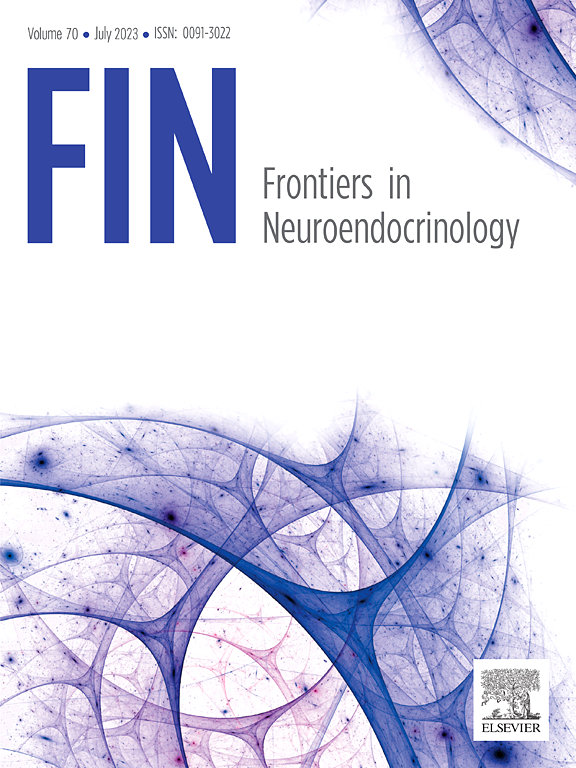Women with polycystic ovary syndrome (PCOS): Likelihood of cooccurring neuropsychiatric conditions and the dual hit hypothesis
IF 6.7
1区 医学
Q1 ENDOCRINOLOGY & METABOLISM
引用次数: 0
Abstract
Polycystic Ovary Syndrome (PCOS) is the most common endocrine-metabolic disorder in women of reproductive age. Hyperandrogenism has been proposed as its main pathophysiological feature. PCOS is associated with co-occurring conditions, including psychiatric disorders such as anxiety, depression, and neurodevelopmental conditions such as autism. Exposure to hyperandrogenism during prenatal life and adolescence may explain this association. PCOS women exhibit hyperandrogenism during pregnancy, and up to 70% of their daughters will present a similar phenotype from puberty onwards. The ’dual hit hypothesis’ proposes that stressors during prenatal life and adolescence can synergistically lead to co-occurring conditions in adulthood. PCOS has been recently proposed as an independent likelihood factor for the development of neuropsychiatric conditions. However, the specific mechanisms require further research to develop effective interventions. This review discusses how hyperandrogenism can affect neurodevelopment during two key periods of brain development, which may explain the long-term impact of PCOS on mental health.
患有多囊卵巢综合征(PCOS)的妇女:并发神经精神疾病的可能性和双重打击假说。
多囊卵巢综合征(PCOS)是育龄妇女最常见的内分泌代谢疾病。高雄激素已被认为是其主要的病理生理特征。多囊卵巢综合征与多种并发疾病有关,包括精神疾病,如焦虑、抑郁和神经发育疾病,如自闭症。在产前生活和青春期暴露于高雄激素可以解释这种关联。多囊卵巢综合征的女性在怀孕期间表现出雄激素分泌过多,她们的女儿中高达70%的人从青春期开始就会表现出类似的表型。“双重打击假说”提出,产前生活和青春期的压力源可以协同作用,导致成年期同时发生的疾病。多囊卵巢综合征最近被认为是神经精神疾病发展的一个独立的可能性因素。然而,具体的机制需要进一步研究,以制定有效的干预措施。这篇综述讨论了雄激素过多如何影响大脑发育的两个关键时期的神经发育,这可能解释了多囊卵巢综合征对心理健康的长期影响。
本文章由计算机程序翻译,如有差异,请以英文原文为准。
求助全文
约1分钟内获得全文
求助全文
来源期刊

Frontiers in Neuroendocrinology
医学-内分泌学与代谢
CiteScore
13.30
自引率
6.80%
发文量
62
审稿时长
68 days
期刊介绍:
Frontiers in Neuroendocrinology (FIN) publishes a wide range of informative articles including comprehensive reviews, systematic reviews, opinion pieces, and meta-analyses. While the majority of reviews are invited, we also embrace unsolicited reviews and meta-analyses, as well as proposals for thematic special issues, provided they meet our rigorous quality standards. In addition, we encourage authors to submit commentaries that concisely present fresh ideas or offer further analysis to delve deeper into the implications of an article published in our journal.
 求助内容:
求助内容: 应助结果提醒方式:
应助结果提醒方式:


